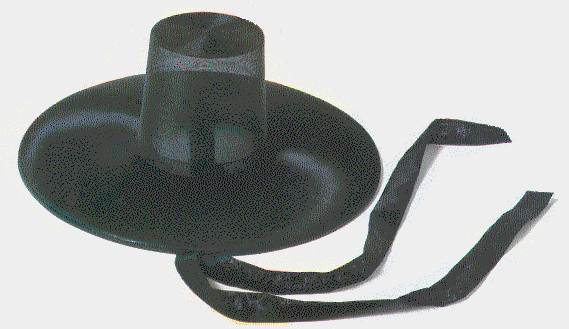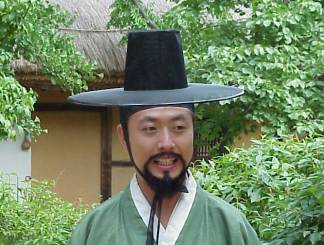
|
The traditional Korean
headgear was worn for protective or ornamental purposes and indicated
the warer's social standing or an occasion. The kat, a Korean hat woven from horsetail hair, was
worn widely by gentlemen during the
Joseon Kingdom (1392-1910). But it dates far back to
the period of the Koguryo Kingdom (37 B.C.-A.D. 668), as proven by a mural in the ancient
tomb, Kamshinchong, which shows men wearing kat.
|
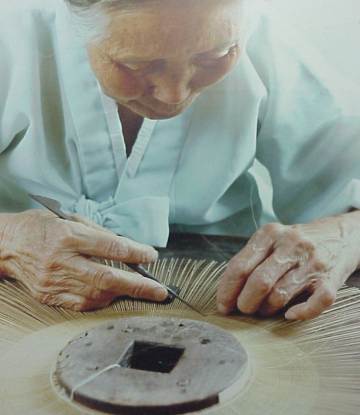
|
During the
Joseon-Dynasty, a man was not considered fully dressed unless he also wore a kat. Thus,
high-ranking officials
and scholars as well as ordinary men wore the kat as a symbol of dignity.
The shape of the kat is graceful and beautiful. It is so light that the wearer hardly feels it on his head. It partly helped to hide the face if
the wearer wanted and filter the sunlight through, slightly illuminating the face. Usually, the color of the kat was black, but during the periods of national or family
mourning, a white kat was worn.
|
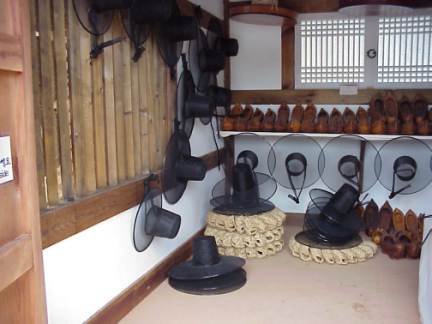 |
Officials wore a black samo hat with their uniforms. Officials and literati
put on horse hair t'an-gon or chong-jagwan hats and yugon cloth hats (a casual hat) at home.
Military officers ware wool hats and commoners wore hats made of bamboo strands. Kat and samo hats
underwent minor changes from time to time following the latest fashions, much as contemporary costumes do.
|
Making Hores Hair Headgear
|
|
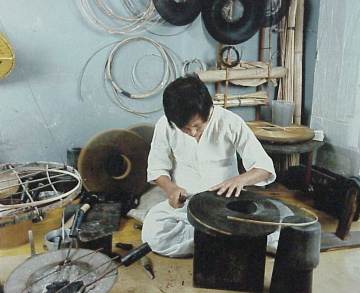 |
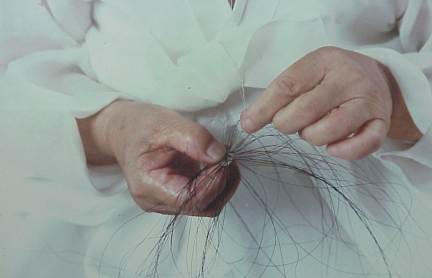
|
|
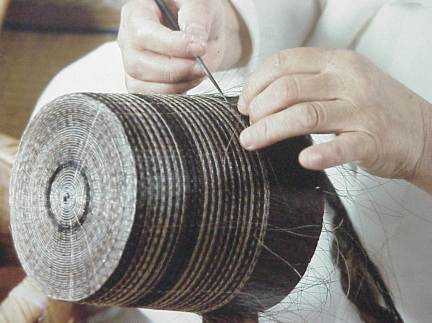 |
| Kat where normally stored in special hat
boxes, which are still available in Korean furniture stores.
|
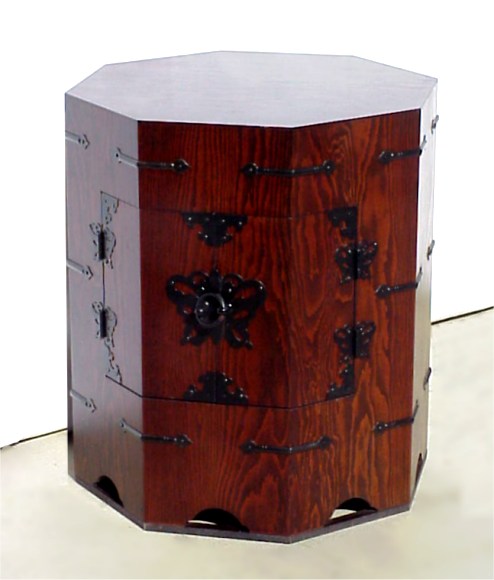 |
|
|
